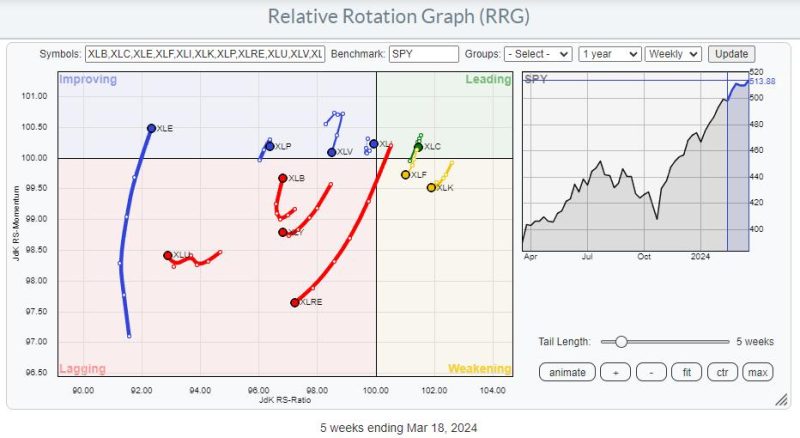As we delve into the concept of energy, we must first understand its two major forms: renewable energy and non-renewable energy sources. The holistic analysis of the energy sector over the years indicates a paradigm shift towards renewable energy. This shift portrays the long-term turnaround in the relative strength of the energy sector that’s brewing.
Renewable energy sources like solar, wind, water, and geothermal energy have been gaining momentum over the years due to their sustainability and environmentally friendly nature. Consequently, this has led to a gradual shift in the energy sector, with more industries and households relying on these energy sources. It has significantly influenced the energy market landscape, disrupting the dominance of conventional energy sources.
This move towards renewable energy has been termed the energy transition. It’s a necessary transformation to achieve sustainable development and combat climate change, and in turn, reshape the relative strength of the energy sector. The energy transition not only contributes to a sustainable environment but also enhances job creation and economic growth. Therefore, governments worldwide encourage this shift by providing various tax incentives and subsidies to companies.
There is no denying that non-renewable energy sources like coal, oil, and gas have been the backbone of the industrial revolution and modern civilization. However, these resources are finite, and their extraction and consumption have severe environmental impacts such as air pollution and climate change. The adverse effects of fossil fuels on the environment have sparked an urgency to seek alternatives, hence the shift towards the renewable energy sector.
Renewable energy also offers the advantage of energy security. Unlike non-renewable energy which is concentrated in few countries, renewable sources are available in some form almost everywhere. This decentralized nature of renewable energy reduces dependency on any specific region or country, thereby improving the relative strength of the energy sector.
The adoption of renewable energy strategies is accelerating thanks to technological advancements reducing the cost of renewable energy production. As a result, the economies of scale in renewable energy production have improved, making it a competitive alternative to traditional energy sources.
The energy storage sector is another key area which is seeing significant advancements. The development of efficient and affordable storage systems has the potential to transform the energy sector completely. Energy storage technologies like batteries improve the flexibility of renewable energies by storing excess energy when the sun shines or wind blows and making it available when needed.
One of the biggest reasons for this brewing turnaround in the energy sector’s relative strength is market dynamics. As consciousness about climate change and environmental degradation grows, consumers are increasingly opting for green and renewable energy products. This demand-side pressure is encouraging businesses to invest in renewable technologies, suggesting a favorable market future for the sector.
The energy sector’s future is prominently being dictated by regulations and policies that are increasingly supportive of renewable energy. Governments worldwide are embracing policies to reduce greenhouse gas emissions, setting ambitious targets for renewable energy use, and planning for a decline in coal usage.
Overall, the energy sector is standing on the brink of a significant transition. The paradigm shift toward renewable energy is altering the pattern of energy production and consumption, effectively leading the turnaround in the energy sector’s relative strength. The advantages of renewable energy, including sustainability, reduced environmental harm, and enhanced energy security, attest to the fact that this long-term turnaround is not just brewing, but actively underway.




